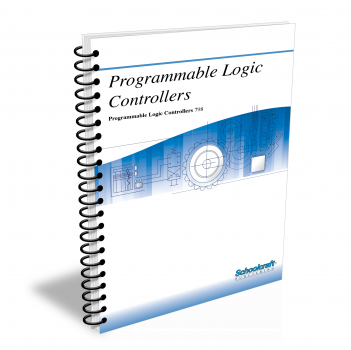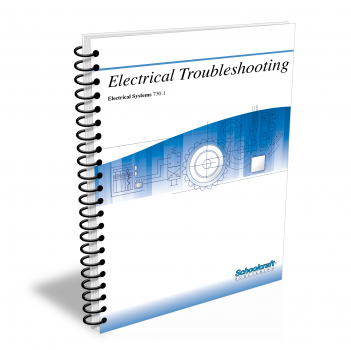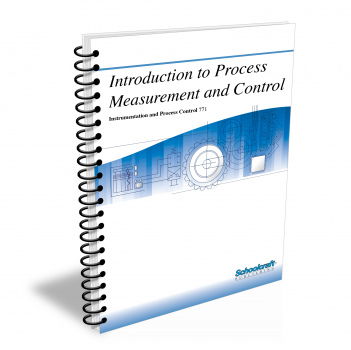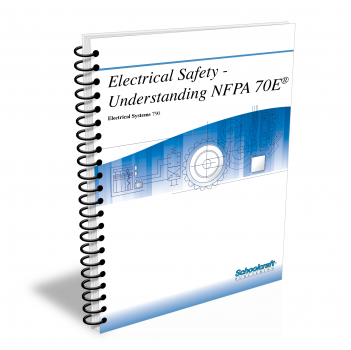Programmable Logic Controllers

Course Number: 798
The Programmable Logic Controllers textbook covers the basic hardware and operating principles of PLCs, their inputs and outputs, programming, maintenance/troubleshooting, and networking.
Does your curriculum require additional topics not included in this textbook? Build a customized version of the Programmable Logic Controllers textbook below.
Recommended Contact Hours – 11
Preview a Chapter
Available Supporting Material
- Table of Contents
- Exam Copies
- Suggested Titles
Table of Contents
Chapter 1: Introduction to Programmable Logic Controllers
Topics: The electromagnetic relay; Characteristics of programmable controllers; Applications of programmable controllers; Limitations of programmable controllers; Parts of a programmable logic controller system; The input side; The processor; The output side; Programming devices; Power supplies
Learning Objectives:
- Describe an electromagnetic relay and define the terms control circuit, power circuit, NO and NC.
- Define programmable logic controller.
- Describe the general type of application in which a programmable logic controller would best be used, and give examples.
- Define scan time.
- Name each of the blocks in a block diagram of a programmable logic controller system and explain how each functions within the system as a whole.
- Define memory and explain the different types
Chapter 2: Number Systems and Logic
Topics: Number systems; Binary-Coded Decimal (BCD); ASCII; Gray code; Boolean logic; Ladder logic
Learning Objectives:
- Compare the decimal, binary, octal, and hexadecimal number systems.
- Explain the purpose for using each of the following: BCD, Gray code, and ASCII.
- Explain what AND, OR, and NOT mean in Boolean logic, and identify the symbols for each.
- Identify AND and OR logic circuits in a relay ladder diagram, and construct a truth table for each.
- Explain the basic concepts of ladder logic..
Chapter 3: Programming the System
Topics: PLC programming; Ladder logic programming; Boolean programming; The AND instruction The OR instruction; The stack register
Learning Objectives:
- Explain the relationship between a programmable logic controller processor and program.
- Define the term scan and explain the basic steps involved in a scan.
- Explain the basic concepts of ladder logic programming.
- Explain the purpose of a parallel branch in a ladder logic program.
- Explain the basic concepts of Boolean programming.
- Define stack register and state the stack rule.
Chapter 4: Input/Output Devices and Modules
Topics: Definition of I/O devices; Discrete input devices; Analog input devices; Digital input devices; Discrete output devices; Analog output devices; Digital output devices; Sourcing and sinking; Definition of I/O modules; Input modules; Output modules
Learning Objectives:
- Explain the operation of common input and output devices and identify their symbols.
- Describe the relationship of an input/output device to a terminal on an input/output module.
- Contrast the basic concepts of a sourcing device and a sinking device.
- Explain the operation of various input and output modules.
Chapter 5: Developing a Programmable Logic Controller System
Topics: Before you begin; Equipment operation specifications; Sizing the system; Program development; Assembling the documentation package; Functional model; Startup and debugging
Learning Objectives:
- Explain the importance of working with accurate information from a specification.
- Demonstrate how to size a system.
- List the elements in a good documentation package.
- Name the steps involved in specifying the hardware and developing the program for a simple control system.
- Describe system startup and debugging procedures.
Chapter 6: Maintenance and Troubleshooting
Topics: The importance of documentation in maintenance troubleshooting; Using the hardware documentation; The maintenance log; Using the program documentation; Operational documentation; Routine maintenance; Batteries; Troubleshooting; Problems in troubleshooting; Troubleshooting in practice
Learning Objectives:
- Explain the importance of good documentation.
- Tell what type of information can be found in user manuals and operations manuals.
- Tell what types of logs are kept and why they are necessary.
- Explain the major concepts of troubleshooting, including problems sometimes encountered.
- Describe routine maintenance procedures required by a programmable controller system.
Chapter 7: System Expansion and Data Networks
Topics: I/O expansion; Configuring the system; Math and data handling instructions; Timers and counters; The shift register; Spray booth retrofit; Indexing table retrofit; Local area networks; Uses for LANs; Transmission media; Transmission schemes; Vendor offerings
Learning Objectives:
- Compare the procedures involved in local and remote I/O expansion.
- Explain what is meant by configuring a system.
- Describe the operation of the shift register instruction.
- Explain how math and data-handling instructions work and why they are added to PLC systems.
- List important items to consider in I/O expansion and retrofitting.
- Define the terms local area network, baud rate, and throughput.
- List and explain the contents of a data packet used in LAN data transmission.
- Name and define the three main applications of LANs.
- List advantages and disadvantages of the three common transmission media used with LANs.
Request Exam Copies
Exam Copies
Ready to see a copy of our textbooks? After selecting which textbooks you’d like to review for your course, you can submit your request by either logging in or creating an account so we know where to ship your exam copies. A representative from Schoolcraft will contact you to confirm and finish processing your request.
Exam copies are always free and yours to keep.
Selected Exam Copies
none selected
* Maximum of five copies can be ordered


